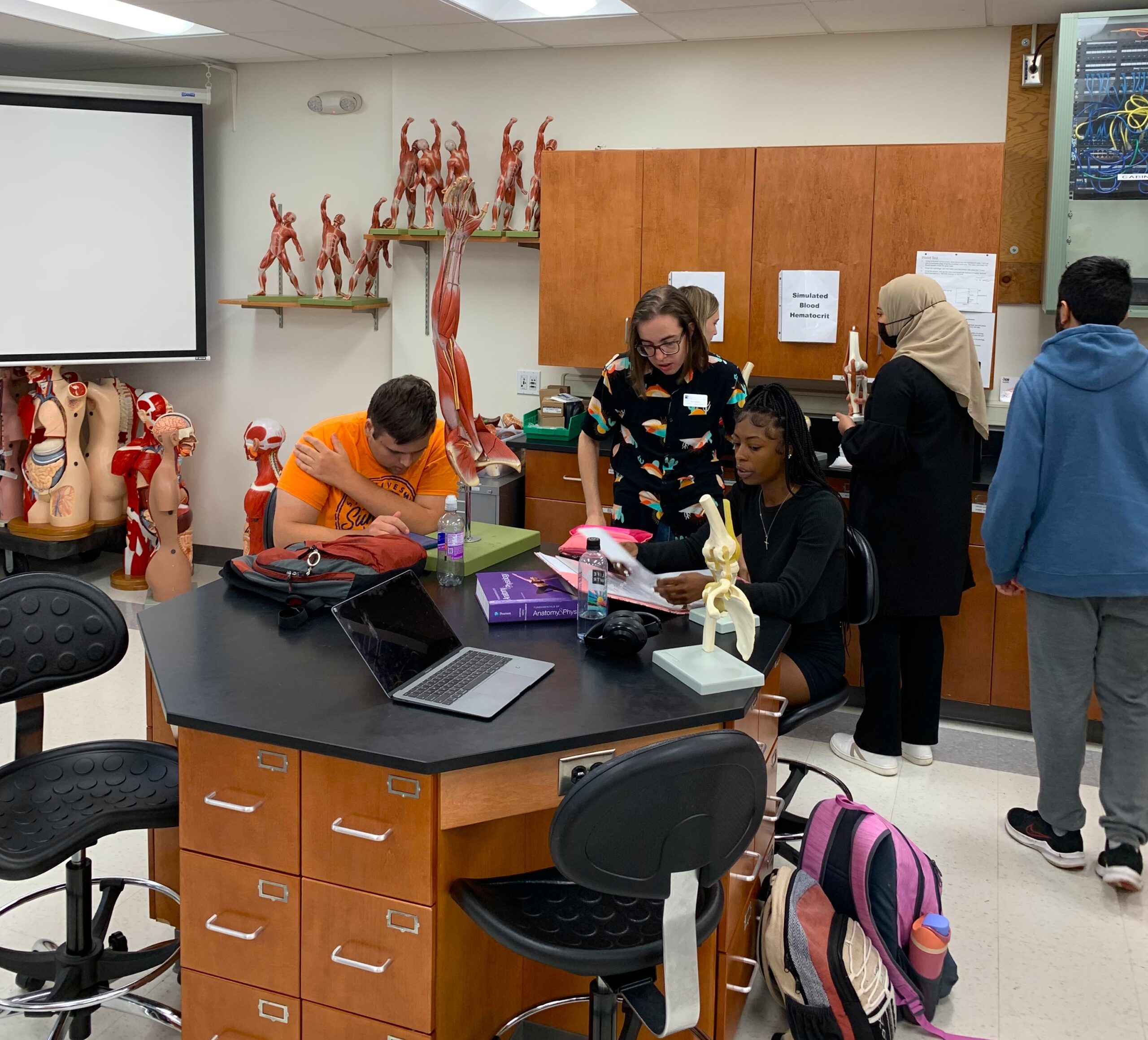Go Red Committee plans events to raise awareness

Kelly Glueck
-Managing Editor-
Patricia Henderson, STLCC Manager of Employment and Recruitment woke up on life support with a balloon in her chest. Two days earlier she had undergone bypass surgery because 85 percent of her left coronary artery was blocked. During the procedure, her artery spasmed and she went into cardiac arrest.
“I was medically dead for one hour while they tried to get me on the machines and the doctor literally had my heart in his hand, pumping it and massaging it until they could get me back on the machine,” Henderson said.
Henderson has been a national spokesperson for the American Heart Association’s (AHA) Go Red campaign since 2008.
On Feb. 17, students, faculty and staff will be wearing red to promote heart disease awareness and healthy lifestyle choices for the AHA’s Go Red campaign. Students can support their cause during Go Red events Feb. 13-17.
“I live every day to its fullest and I’ve made it a goal of mine to share my story with other women because while most individuals think it’s breast cancer, it’s heart disease that is killing more and more women.” Henderson said.
Heart disease, a common concern in males, is the number one killer in the United States for both men and women, according to Dolores Jefferies, member of the Meramec Go Red Committee and open-heart surgery survivor.
“Our goal is to make women aware and every bit of money we collect in these events will go to the American Heart Association,” Jefferies said. “In the past, we’ve been able to raise between $1,300 and $1,600 and we invite everyone to participate.”
Both survivors, Henderson and Jefferies, stressed the importance of taking symptoms seriously. The AHA lists chest discomfort, upper body aches, shortness of breath, dizziness, vomiting and fatigue as the major signs of heart disease.
Henderson said that because women are busy with their day-to-day lives, they often dismiss the common symptoms.
Jay Snaric, biology professor at Meramec said that heart disease affects the blood vessels that serve the heart muscle. He said that the risk of heart disease is increased by factors such as obesity, lack of exercise, smoking, diabetes, high “bad” cholesterol, or high low-density lipoprotein (LDL) levels; however, most of these factors can be lowered.
“Although some people have a genetic predisposition that increases their risk of heart disease, most of us can significantly lower our risk by having a [body mass index] under 25, exercising on a regular basis; and eating mostly vegetables and other high fiber foods and lean meats,” Snaric said.
Working out an average of three to five times a week, doctors told Henderson that because of her physical health, she was able to survive two surgeries in 24 hours. She did not have a history of heart disease nor were her numbers unsatisfactory, but because she was aware of the burning in her chest and the fatigue as she left the STLCC Cosand Center, she was able to get the treatment she needed and is able to tell her story today.
“It was the worst situation that anyone could experience, but it was blessing because I’m here to tell women to pay attention to their bodies,” Henderson said. “If I hadn’t, I would not be here and that is why my scar is my lifeline. I’m not ashamed of it.”
The Go Red delivery cart will be serving snacks Feb. 13-17; look for the dark chocolate special on Tuesday. Wednesday there will be information centers promoting healthy habits as well as a “Cooking Light” demonstration by Meramec’s resident Chef Jeff in BA 105 from 11 a.m. – 1:30 p.m. Go Red will end the week with auction bidding and lunch in BA 105 from 11 a.m. – 1:30 p.m.; door prizes available while they last.












